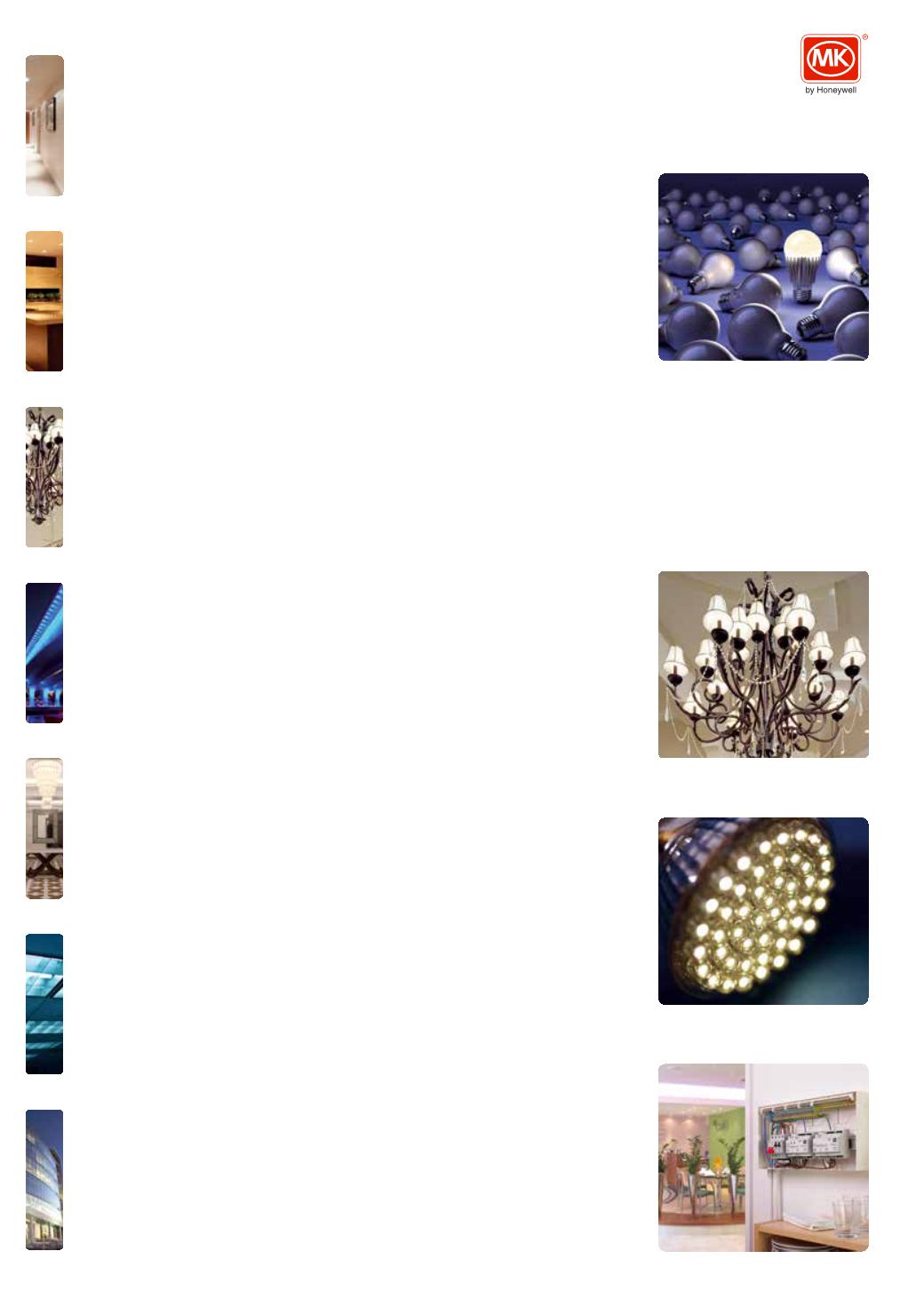

Understanding dimming
technologies
Dimming lamps require a reduction of the power into the device to produce a
reduction of the intensity of the light source. As well as dimming for comfort or
effect, by using low energy lamps together with a dimming functionality, you
can significantly reduce energy costs within a building. With many different
lamp types and technologies available, sourcing the correct dimmer can be
challenging as different lamp technologies require different dimmers.
Leading Edge (LE, R or RL) is the most commonly used method for lamp dimming
and is frequently used for standard incandescent, mains halogen, LV halogen,
CFL and LED. Trailing Edge (TE) is often used for electronic loads designed for TE
dimming, such as electronic transformers for LV halogen and is also suitable for
standard incandescent and mains halogen. Both methods reduce the power into
the lamp providing dimming control, but to get the best performance and avoid
compatibility issues you need to select dimmer products that most closely suit your
installation needs. Transformers should be marked to indicate LE or TE compatibility.
Dimming considerations
How many lamps?
Every dimmer has a defined operating voltage and power rating. Overloading
a dimmer with too many lamps or transformers is likely to result in failure to
illuminate, flickering or delays in dimming. Lamps might display ‘stepping’ in
lumen (light) output at points within the dimming range and occasionally an
incompatible lamp or LV transformer may cause a buzzing in the dimmer.
Some lamp types cause high currents when they are initially turned on. For these
types MK dimmers have a limit on the maximum amount of lamps that can be
connected to any one dimmer. Also with LED lamps in particular exceeding the
maximum number of lamps in a circuit may cause the dimming range to be
compressed such that the minimum lumen (light) output is too high, which will
negate the dimming functionality.
For example: The MK LED Dimmer has a maximum load of 70W for LED Lamps
or 300W incandescent lamps. If using 12W LED lamps, the maximum number of
lamps would be 5. However if using 4W LED lamps only. 10 Lamps may be used
giving 40W total load. The maximum number of lamps and the maximum power
allowance must never be exceeded.
Low Power Dimming
Dimming LED Lamps with a low power rating (up to 6W) can be problematic due
to the design of the dimmer relying on a minimum load to perform the dimming
operation. Dimmers designed for use with LED lamps will indicate the minimum
wattage of the lamps that must be connected to the dimmer, to operate effectively.
High Power Dimming
When an installation requires the specification of a dimmer to control larger
lighting loads, the MK Electric High Power Dimmer will meet your requirements.
The High Power Dimmer includes a host of different functions, enabling lighting
scene control, stairwell lighting and push button dimmer with memory. For
applications up to 3000 Watt loads, an installation can be specified to include a
Master and up to 2 Slaves.



















